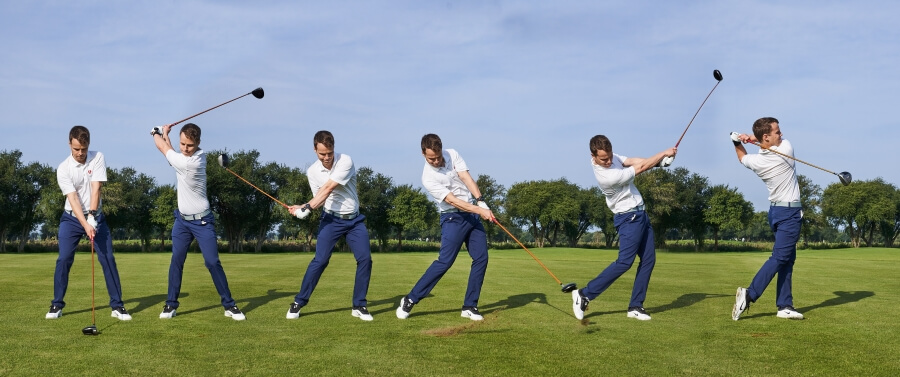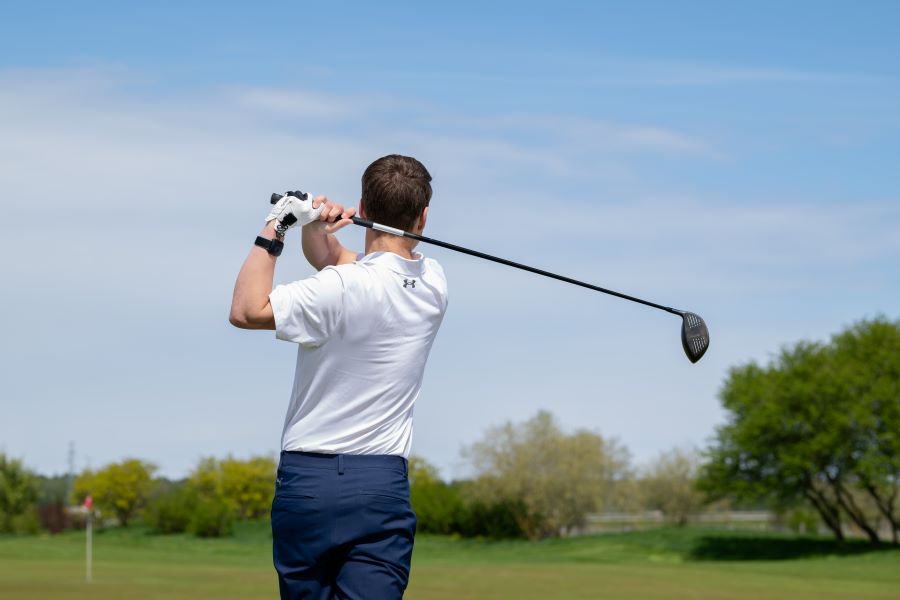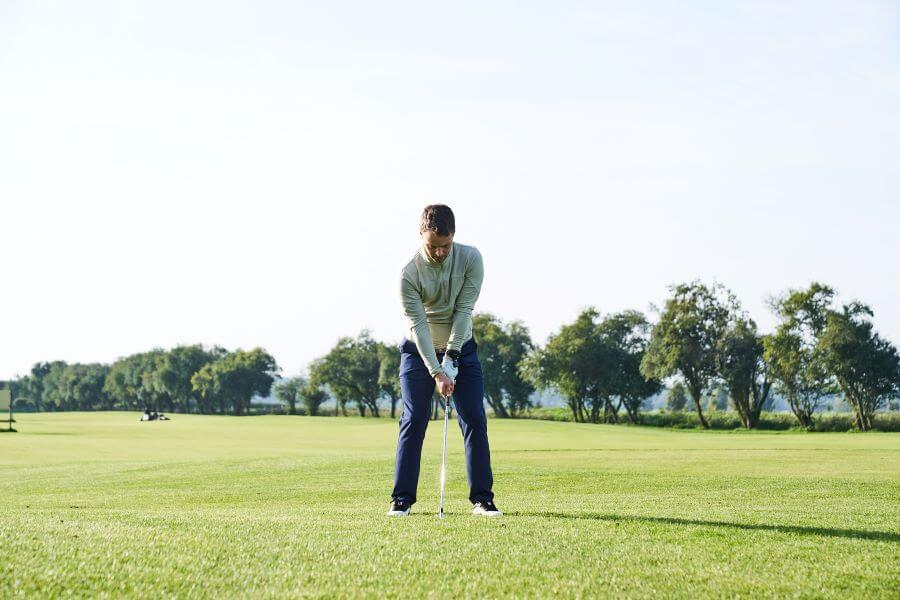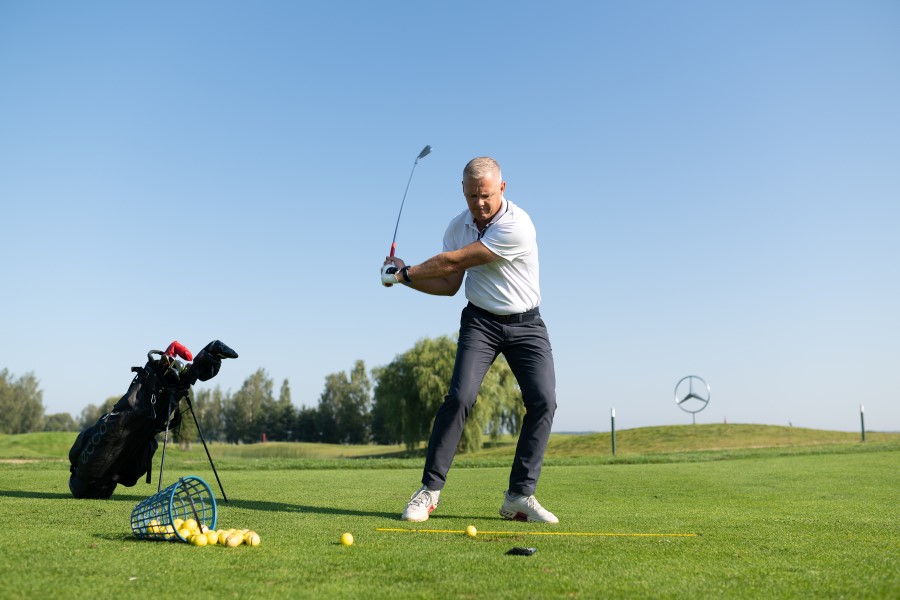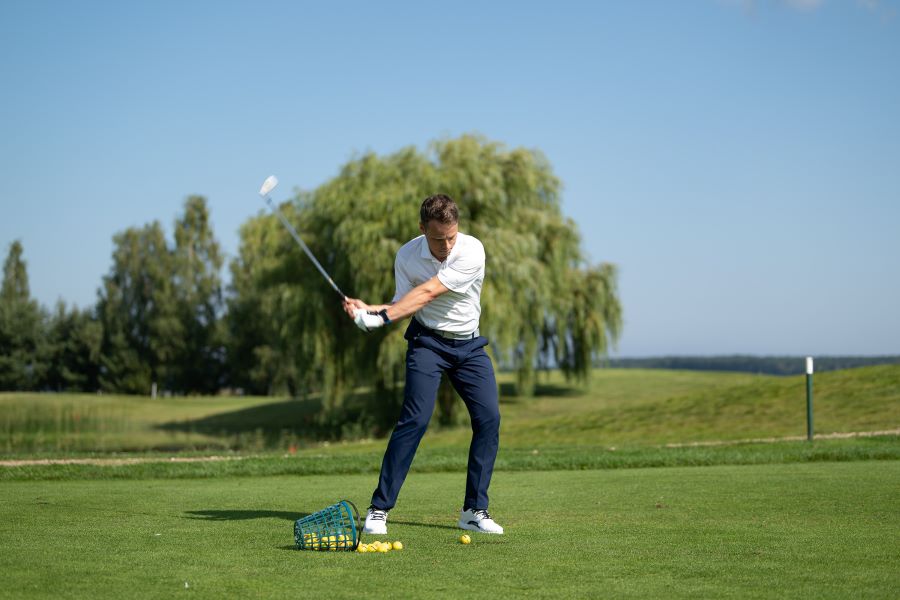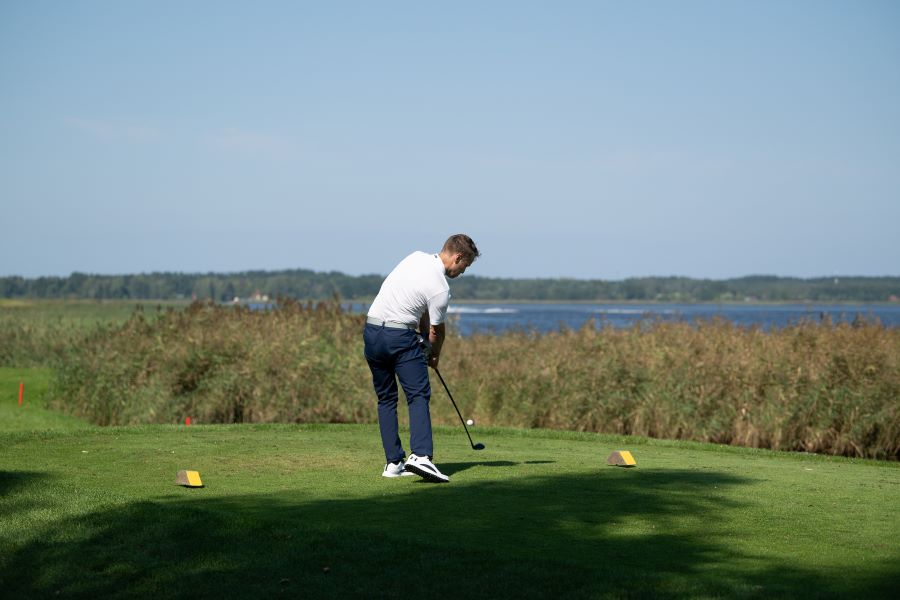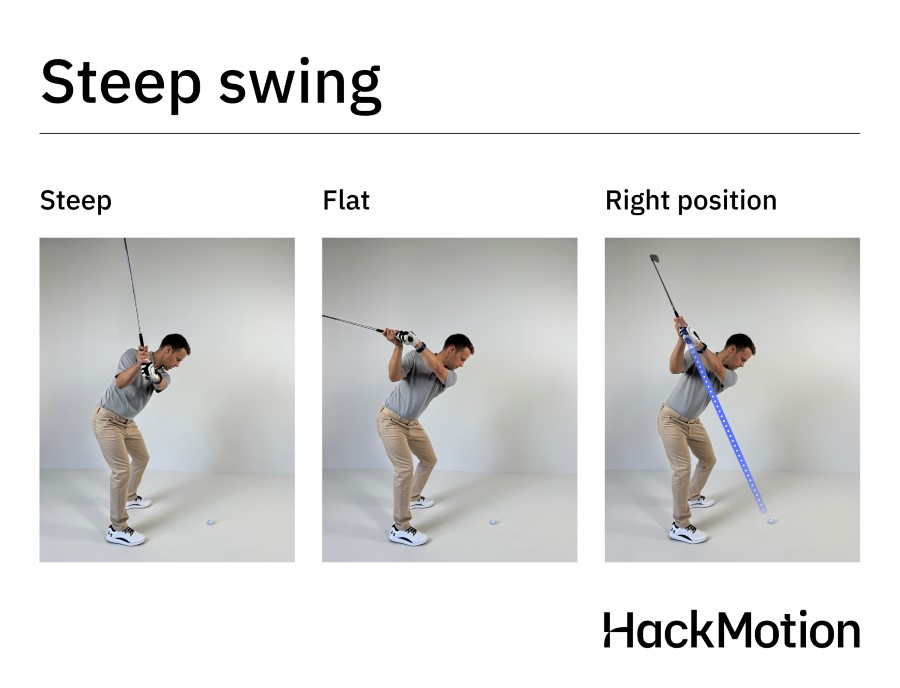How to Stop Hitting Fat Golf Shots: 7 Tips & Drills for Solid Contact
Hitting fat golf shots is frustrating. You take a big swing, only to find the ball ends up just a few yards in front of you.
Chances are, if you are hitting fat shots, you are doing it on a fairly consistent basis.
If you are ready to stop hitting fat shots, there are a few simple tips and drills that can help these shots disappear. Read this guide before you head to the driving range to clearly understand what you need to work on.
Stop Hitting Fat Shots (Key Takeaways)
If you don’t have time to read through these ways to stop hitting fat shots, here are a few of the most important takeaways.
- Start your downswing with your lower body, during transition, start by rotating your lower body first. An arms-first downswing makes it difficult to strike the ball cleanly.
- Ensure you are standing at an appropriate distance from the ball. Too close a stance may cause the club to ground too early.
- At the top of your backswing, maintain a flat or slightly flexed lead wrist.
- Focus on transferring your weight to the lead foot during the swing, practice with a step drill to feel the weight shift and improve your contact consistency.
- Pay close attention to grip pressure, too much pressure in your hands will create tension and cause fat shots.
If you prefer to learn by watching, here is a video explaining why you hit fat shots, and some great ways to fix the issue.
Contents
Why do I Hit Fat Shots?
There are a few reasons you may be hitting the ball fat; these include:
- Improper Weight Shift: Failing to shift weight forward onto the lead foot during the downswing.
- Incorrect Ball Position: Positioning the ball too far forward or back in the stance.
- Early Release of the Club: Releasing the club too early in the swing which increases the angle of attack.
- Poor Posture: Standing too upright or slouching can throw off the swing plane and cause the club to hit the ground first.
- Excessive Tension: Holding the club too tightly can restrict the natural flow of the swing.
- Playing from a Poor Lie: Trying to hit from a difficult lie, like deep rough or an uneven surface, where the club can easily get caught before hitting the ball.
7 Simple Steps to Stop Hitting Fat Golf Shots
Fat shots happen from time to time, regardless of your golf handicap. If you are prepared with a list of the correct details to fix these shots you can recover quickly.
1. Keep Your Shoulders From Swaying
The shoulders should pivot in your golf swing. A good shoulder turn allows you to gain power.
When your shoulders move laterally, you miss out on those clean strikes.
For many golfers, the fix is to feel as though you stay over your left side (or lead side) a little longer. You can exaggerate this feeling through a drill where you keep all your weight on the lead foot.
2. Check Your Distance to the Ball
Are you comfortable with how far you stand from the golf ball?
Check your distance to the golf ball and see if you are giving yourself enough room to swing through and strike the ball cleanly.
Many times if you are standing too close there is nowhere for the ball to go and the club grounds too early.
Play around with different ball positions and watch how it changes the flight of your shots.
3. Don’t Hold the Club So Tight
When you get frustrated with golf, squeezing the golf club tighter is easy. Try not to do this.
The tighter you squeeze the club, the more attention you bring to your upper body, hands and wrists.
You can eliminate these issues by reducing tension in your golf swing and ensuring that you are using the hips and shoulders to get through the shots.
Start by releasing some of the tension in your shoulders. Then feel it move down your arms, wrists and into your hands.
Take some deep breaths and keep your stance and setup position fluid. Watch the pros; they don’t stand still over the ball for a long time.
4. Get the Right Ball Position
If you have a golf ball too far forward in your stance, you may hit it fat.
The problem is the bottom of your swing arc will bottom out before you reach the golf ball.
Start with your 7-iron and put the ball directly in the center of your stance.
As clubs get longer, move them up a little. Keep the short irons and wedges in the center for the most part.
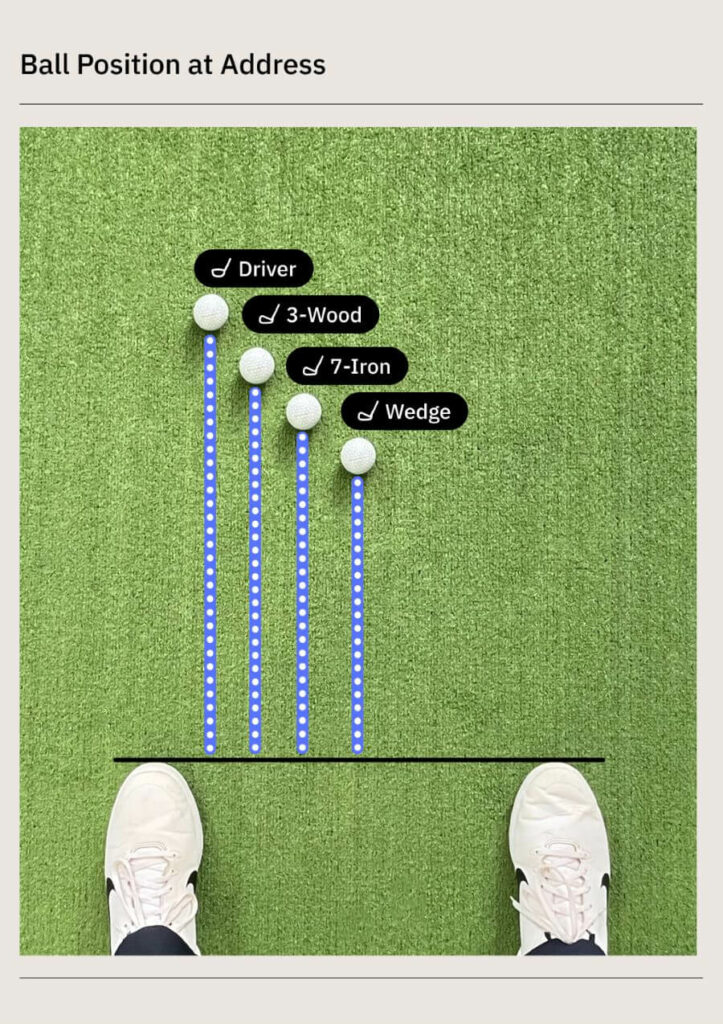
At the driving range, use two alignment sticks to form a T. As you practice, pay close attention to where that ball position is and what works best to help you stop hitting fat shots.
5. Start the Downswing with the Lower Body
The lunge at the golf ball with the upper body is a very common cause of a fat shot. As you complete your backswing and start to transition to the downswing you’ll need to start that motion with the lower body.
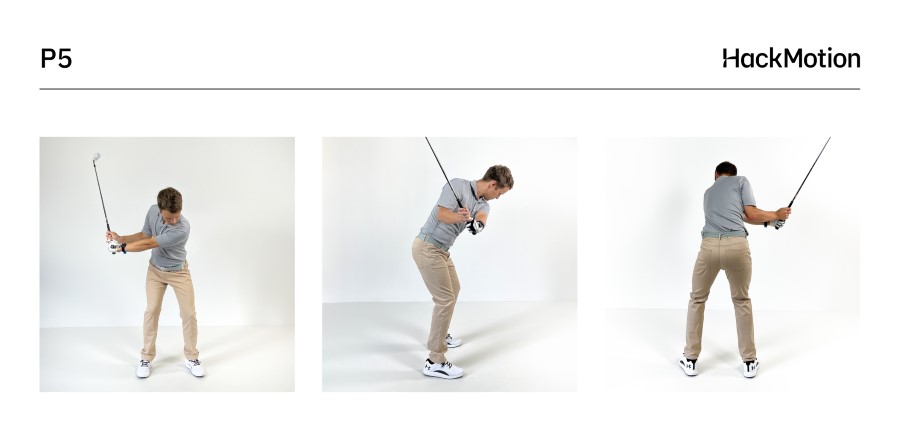
Starting the downswing with this lower body rotation ensures you accelerate through impact.
Without this rotation, your club will slow down, and you may end up with a chunk shot.
Take some slow motion swings to the top, stop and then rotate with the lower body to see if you can get that turn started the right way from the top.
6. Keep the Wrist More Flexed
If your wrist position is getting too extended, the clubface is open and you’ll try and compensate for that by flipping at impact.
We have analyzed more than 1,000,000 golf swings, and as we have watched the best golfers do, it’s very clear how the extension in the lead wrist causes flipping through impact.
At the top of your backswing you want your lead wrist to be flat or slightly flexed. As you transition from backswing to downswing you’ll have to move toward flexion to avoid flipping and fat shots.
7. Shift the Weight
Without the proper weight shaft, you’ll have inconsistent contact.
For most golfers who hit fat shots, this happens because the weight never transfers to the lead side. Instead, it stays on the back leg and causes the club to bottom out early.
The best way to feel this is to use something like a step drill. You can start this by setting up with your feet together.
You will feel that step onto your lead foot as you swing through the ball. This drill can be practiced both on and off the golf course to make it easier to stop hitting fat shots.
Additional Drills to Help You Stop Hitting Fat Shots
When you find the right drill to fix an issue in your golf swing, it’s like it clicks. You finally feel what it takes to get the proper motion.
Here are a few extra drills in case some of the ones above still didn’t click for you.
Towel Behind the Ball
This video from Good Good Labs gives you a really simple drill where you place a towel behind the golf ball. On the downswing, you want to avoid striking the towel.
The great thing about using a towel here is that it can’t damage your club; if you hit it, you’ll learn to not suffer an injury.
Feet Together Drill
One of my favorite golf drills for eliminating fat shots is to hit some golf shots with your feet completely together.
This process of hitting shots with your feet together forces you to be more compact in your motions and keep your turn more efficient. You’ll quickly realize if too much turning or movement is causing you to hit fat shots.
Final Thoughts
Fat shots are worse than thin shots. Your result will rarely end up near your intended target. You’ll be stuck having to take another swing and be worrying about hitting behind it yet again.
Learn how to set up right, get your wrist angles correct, transfer your weight and make clean contact with the golf ball. Use these drills to make sure you are progressing towards a better swing and more consistent golf shots.





